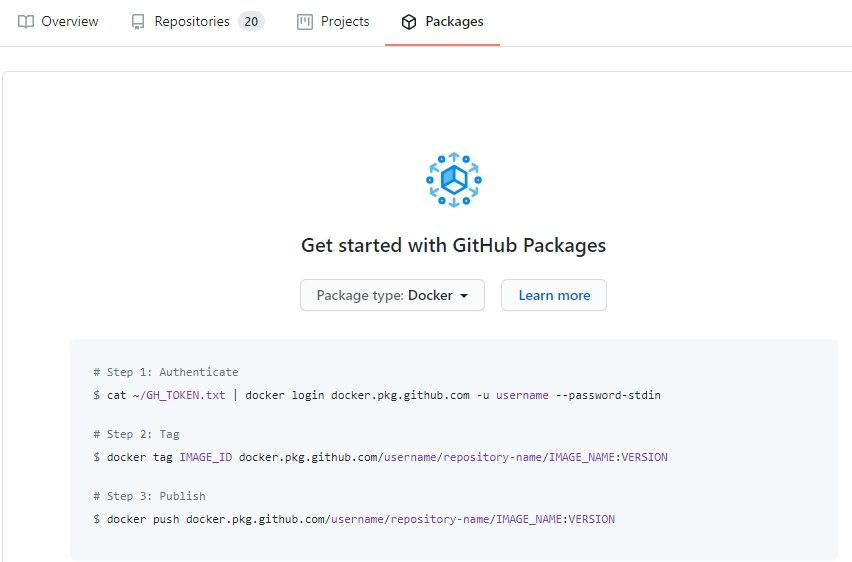GitHub Container Registry was introduced on the 1st of September 2020. It's still in the Beta stage, so it's rather not recommended to use it in production. However, it offers us free private storage for our Docker images, at least until the end of the Beta period.
Private storage, free and unlimited download... looks like a good enough option for local development.
In this post, I'm going to configure my local Kubernetes cluster to pull images from my GitHub Container Registry.
Enable GitHub Container Registry
First things first. We need to enable GitHub Container Registry for our account (Process for your organization is almost the same).
Note GitHub Container Registry is in public beta state at the moment of writing, so it's subject to change. I recommend to follow the official documentation, it's more likely to be up to date.
Create Access Tokens
For now, Container Registry supports just one authorization option, which is Personal Access Token (PAT). I'm going to create two tokens here (note the scopes).
One token with read:packages scope will be used for my local Kubernetes cluster to perform pull actions. And another token I'll use to manage images in my registry (remember Authentication step from GitHub Packages configuration page?).
.dockerconfigjson
Once I have my PAT token created I can build an auth string using the following format:
username:123123adsfasdf123123 where username is my GitHub username and 123123adsfasdf123123 is the token with read:packages scope.
let's Base64 encode it first:
echo -n "username:123123adsfasdf123123" | base64
dXNlcm5hbWU6MTIzMTIzYWRzZmFzZGYxMjMxMjM=
With this string I can compose a new .dockerconfigjson:
{
"auths":
{
"ghcr.io":
{
"auth":"dXNlcm5hbWU6MTIzMTIzYWRzZmFzZGYxMjMxMjM="
}
}
}
Which we can Base64 encode again:
echo -n '{"auths":{"ghcr.io":{"auth":"dXNlcm5hbWU6MTIzMTIzYWRzZmFzZGYxMjMxMjM="}}}' | base64
eyJhdXRocyI6eyJnaGNyLmlvIjp7ImF1dGgiOiJkWE5sY201aGJXVTZNVEl6TVRJellXUnpabUZ6WkdZeE1qTXhNak09In19fQ==
and store it at as dockerconfigjson.yaml file.
Note: base64 is not an encryption, so you should not commit this file! This is just for a demo.
And now we have prepared all the pieces, time to create a new secret
kubectl create -f dockerconfigjson.yaml
secret/dockerconfigjson-github-com created
Which can be used later on when we schedule our pods:
And the final step is to check Pod Events (I'm using Lens Kubernetes IDE here).
Have fun, and enjoy it while it's free!
This is a cross post from my personal blog.










Top comments (1)
I have also succesfuly used the
create secretkubectl cli command. It has the benefit of doing the transformation for you.